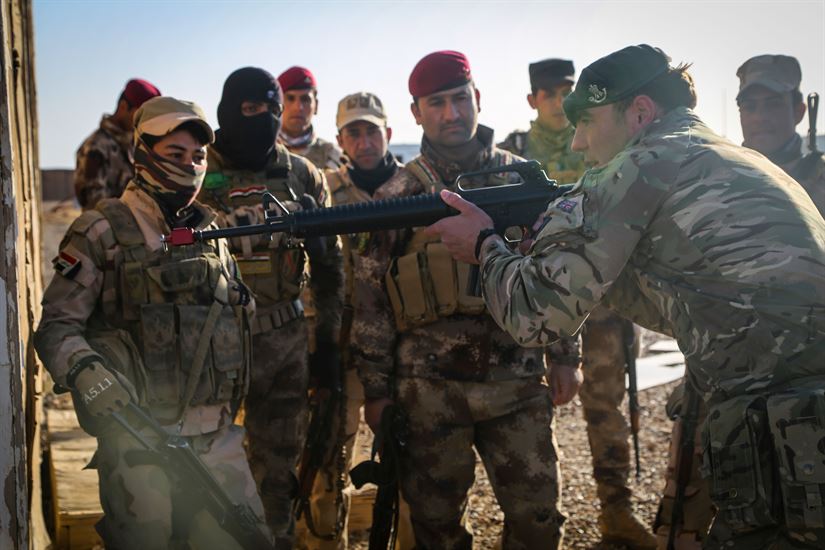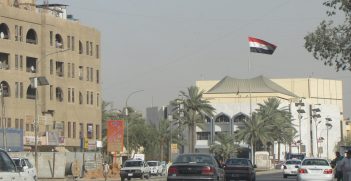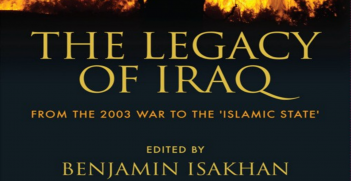Killing the Caliph Won’t Kill the Islamic State

The recent killing of Islamic State leader Abu Bakr al-Baghdadi is indeed cause for celebration, however, leadership decapitation does not guarantee total defeat of the organisation. Kiriloi M. Ingram explores the dynamics which impact the potential for Islamic State to survive its current predicament.
The killing of Islamic State leader Abu Bakr al-Baghdadi during a US special forces operation on 26 October 2019 marks a significant blow to the organisation. This organisation once governed a territory across Syria and Iraq equivalent to the size of Britain, administering taxes and attracting tens of thousands of men and women to its ranks. It is hard to refrain from celebrating the death of the Caliph, particularly given the precipitous decline of the self-proclaimed Caliphate. Indeed, Islamic State is still trying to recover from losing its last sliver of territory in March this year. However, contrary to US President Donald Trump’s claims of total defeat, Islamic State may be down, but it is certainly not out, and the death of al-Baghdadi does not guarantee absolute destruction. To predict Islamic State’s future prospects of survival after this leadership decapitation, it is useful to look into its history and the legacy Abu Bakr al-Baghdadi left behind.
Abu Bakr al-Baghdadi’s Legacy and the new Caliph
Learning from his predecessors, Abu Bakr al-Baghdadi’s leadership was central to Islamic State’s organisational stability and strategic successes. After being elected leader of Islamic State of Iraq in 2010 by the group’s Shura Council, al-Baghdadi seemingly resurrected Islamic State of Iraq from defeat following the Sunni tribal awakening and U.S. coalition surge in 2007 –2010. In June 2014, Abu Muhammad al-Adnani, Islamic State’s former spokesman, announced the establishment of the Caliphate in Syria and Iraq, with al-Baghdadi accepting the position as Caliph in July 2014. As detailed in War on the Rocks and by the Program on Extremism, al-Baghdadi’s credibility and authority as Caliph satisfied both “legal-rational” and “traditional” criteria. In short, al-Baghdadi’s legal-rational authority was met through his election via the Shura Council processes, demonstrating adherence to legal bureaucratic processes. He fulfilled traditional expectations with his lineage to the Al-Qurayshi tribe and thus a lineage to the Prophet Muhammad. He also held a PhD in Islamic jurisprudence and was presented as amir al-mu’minin, which promotes his political and military authority.
Abu Bakr al-Baghdadi was not the first leader – nor seemingly the last – to fulfil both legal-rational and traditional criteria. Abu Omar al-Baghdadi, former leader of Islamic State of Iraq, held Qurayshi ties and was chosen by the Mujahideen Shura Council, thus ensuring Abu Omar had the authority needed to lead Islamic State of Iraq following Abu Musab al-Zarqawi’s (founder of the predecessor group to Islamic State) death in 2006. Given the efficacy of this repeated selection process, the death of Abu Bakr al-Baghdadi has left a legal-rational and traditional void which Islamic State have already sought to fill in order to maintain organisational and strategic cohesiveness. On October 31 2019, the new spokesman for Islamic State, Abu Hamza al-Qurayshi, officially pronounced Abu Ibrahim Hashimi al-Qurayshi as the new “emir (commander) for the believers and Caliph for the Muslims.” Abu Hamza declared that Abu Ibrahim’s appointment as Caliph took place in accordance with the “Sunna [tradition] of the noble Companions” (satisfying traditional criteria) and after deliberation with the Shura Council (satisfying legal-rational criteria). Appointing Abu Ibrahim al-Qurayshi as Caliph rather than an emir and repeating this succession process demonstrates that Islamic State’s bureaucracy and dogmatic commitment to its manhaj (methodology) remains.
The Future of the Islamic State
Abu Bakr al-Baghdadi’s death is a major loss, and with no more territory, Islamic State’s Caliphate only exists in the nostalgia of its propaganda, members and devout supporters. However, Islamic State is no stranger to the hardships and tribulations of protracted warfare. Have no doubt, Islamic State is in a stronger position now compared what it was between 2007 and 2010, and as a number of scholars suggest, Islamic State’s procession of leaders since its inception has developed a strategic culture that seeks to learn from past mistakes and misfortunes in order to improve future performance. Islamic State’s history proves itself to be capable of adapting to leadership decapitation and evolving politico-military circumstances.
Whether Islamic State can survive its recent woes lies in the group’s ability to adhere to its manhaj and maintain its organisational, strategic and ideological coherence. Islamic State see the newly appointed Caliph as a step in the right direction, and as Aaron Zelin predicted, Islamic State have already begun a new bay’at (pledging of allegiance) campaign from transnational wilayat (provinces), to legitimise Abu Ibrahim al-Qurayshi. Whether Islamic State foretold losing its territory or not has been subject of debate, but what is clear is that the group’s definition of defeat and its position on territorial loss and leadership decapitation acts as a convenient fallback for when times get tough. Issue 1 of Rumiyah demonstrates this:
“The killing of our persevering brothers who preceded us, like Shaykh Abu Muhammad al-‘Adnani, will not harm Islam at all, as it is preserved by Allah, just as it will never harm our brothers…By Allah’s permission, their slaying will not harm the Islamic State…”
Again, Abu Muhammad al-‘Adnani’s speech in 2016 states, “And would we be defeated if we lost Mosul or Sirte or Raqqa? Certainly not! True defeat is the loss of willpower and desire to fight.” Abu Omar al-Baghdadi’s simple statement, “Islamic State is bāqiyah [remaining],” has come to shape Islamic State’s notion of success and losses: so long as Islamic State exists, they simply have to remain steadfast until the opportunity arises to re-emerge and expand once again.
A number of analysts warn that although Islamic State is weak, the plethora of historical, psychosocial, political and economic factors that enabled Islamic State to take hold in the first place still exist. Islamic State have been able to mobilise popular support and control areas where sectarianism and the absence of state governance have rendered the environment susceptible to infiltration by non-state actors. Withdrawing U.S. troops from Syria can potentially create the vacuum Islamic State needs to re-establish control and furthermore, raises serious security concerns around the ability for Islamic State men to escape prisons run by Kurdish forces.
What about the Women?
The women of Islamic State have and will continue to play an important role in the group’s strategic aspirations. Further compounding the threat of an Islamic State resurgence is the fact that Islamic State undoubtedly have networks deeply embedded within societies across territories it once controlled. These networks are highly likely to be strengthened by the cohort of female Islamic State supporters residing in internally displaced persons (IDP) camps, such as al-Hawl in Syria. While many of these women are from countries outside of Syria and Iraq, Western governments, including Australia, refuse to repatriate their citizens. Leaving these women in IDP camps for already exhausted Iraqi and Syrian forces to bear the burden poses a dire security threat, particularly upon their release. In June this year, about 800 women and children were released from Al-Hawl. A report released soon after interviewed some of the women and found that although they were assessed to no longer be a security threat, some were still strong supporters of Islamic State. One woman said, “I am happy to be released but I hope that the Islamic State is back, that it will rule us once again.” More recently, over 700 women and children escaped the Ain Issa camp in Syria, including three women from France who have reportedly rejoined Islamic State as operatives. Now that the group has transitioned back to an insurgency movement, women will play a central role in establishing the networks and foundations necessary for a future resurgence. Therefore, it is essential that preventative programs tailor their efforts to deal with these unique challenges, as recently outlined in Lawfare.
If the international community continues to underestimate the security threat women pose, and remain complacent in the fight against Islamic State, the decapitation of Abu Bakr al-Baghdadi is unlikely to compromise the group’s future. Islamic State is without a Caliphate, and its newly elected Caliph has a major void to fill. Now is the time to capitalise on the group’s weaknesses and address the pertinent socio-political conditions to ensure that this vicious and abhorrent group has no traction to regain control in the Middle East and beyond.
Kiriloi M. Ingram is a PhD candidate at the University of Queensland’s (UQ) School of Political Science and International Studies. Her doctoral research analyses identity and gender construction in Islamic State’s online information operations. She is also a Program Developer and Field Adviser with the Strategic Communications Capacity Building Project (SCCB).
This article is published under a Creative Commons Licence and may be republished with attribution.





